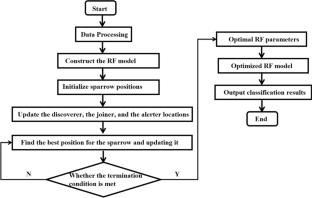Dynamic Recrystallization Grain Identification for a Duplex-Phase Titanium Alloy Based on a Machine Learning Method
Abstract
Single-pass isothermal compression experiments for a duplex-phase titanium alloy (Ti–10V–5Al–2.5Fe–0.1B alloy) at 800–920 °C and strain rate of 0.0005–0.05 s−1 were carried out. A dynamic recrystallization (DRX) grain identification method based on the optimized random forest model by sparrow search algorithm (SSA-RF) was used to identify DRX grains in the microstructure and realize the prediction of the degree of DRX in the microstructure under the new parameters. To verify the predictive ability of the SSA-RF model, the Extreme Gradient Boosting (XGBoost) model is introduced to identify DRX grains, and the prediction results are compared with those of the SSA-RF model. After statistically calculating the identified DRX grains, the research results show that the average relative absolute errors between the true and predicted values for DRX fraction and average DRX grain size are 9.43% and 14.04%, respectively, which are lower than those of the XGBoost model. The SSA-RF model has a higher precision in identifying DRX grains and predicting the degree of DRX at the new process parameters. In order to realize the prediction of DRX degree under new process parameters without experimental data, new data was constructed as the predicting data for the SSA-RF model based on the average grain size and the average length–diameter ratio data predicted by the SSA-RF model. The predicted results show that the errors between the predicted and true values for average DRX grain size and DRX fraction are 4.21 μm and 15.53%, respectively. The predicted results give a good indication of the true degree of DRX.
Graphical Abstract


 求助内容:
求助内容: 应助结果提醒方式:
应助结果提醒方式:


